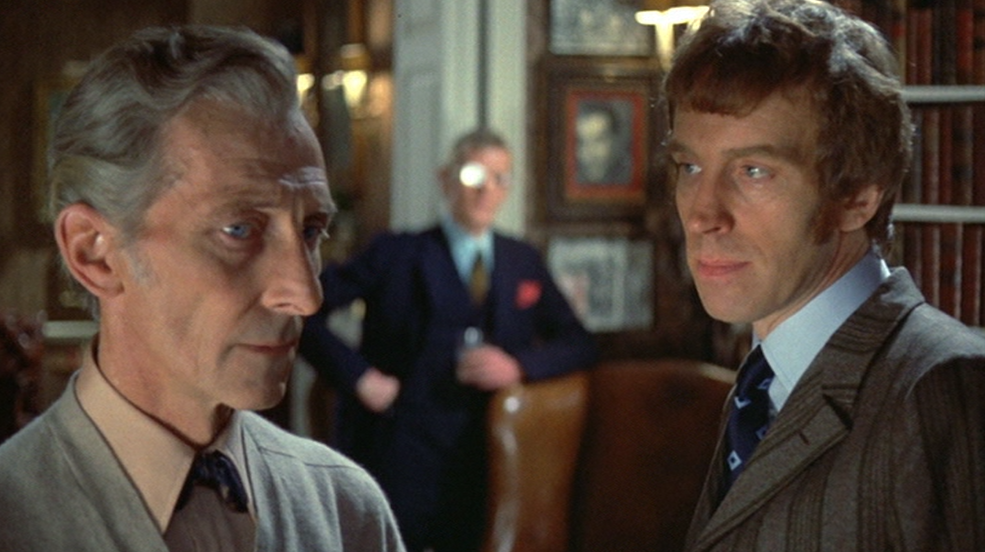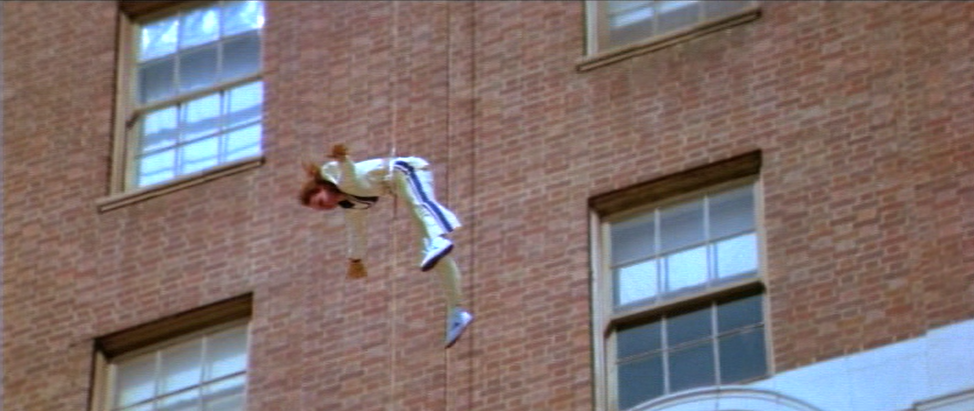Hammer's rather uneven attempt to drag Dracula and the studios patented Gothic trappings kicking and screaming into a 1970's setting has never been held in very high regard even by the most ardent of the studio's fans. Warner after noticing the healthy box office returns for the Count Yorga films approached Hammer regarding a two picture deal that would bring the iconic vampire into a contemporary setting - with the second picture being the even more problematic THE SATANIC RITES OF DRACULA in 1973 and the series would finish up with the Shaw Brothers collaboration THE LEGEND OF THE 7 GOLDEN VAMPIRES IN 1974 (which I've always liked). Hammer which by this time had begun to see the writing on the wall in regards to a shrinking market for its Gothic horrors probably jumped at the chance to hopefully expand their audience.
In 1970 after Peter Sasdy's wonderful TASTE THE BLOOD OF DRACULA (which for the first time in the series placed Dracula in his literary origins of Victorian England) Hammer followed up with the shoddy SCARS OF DRACULA. Looking to amp up the blood & gore content (unfortunately on what would seem to be laughably small budget), SCARS was a huge letdown after the atmospheric TASTE THE BLOOD (which is my favorite in the series after the original) and its relative failure at the box office was probably another inducement for Hammer to try something different.
DRACULA A.D. 1972, while far from the studio's best effort, does have some things to recommend it including the presence of Peter Cushing, heaving bosoms courtesy of Stephanie Beacham and Caroline Monro and of course Christopher Lee. The film was shot by Dick Bush (who also was the cinematographer for TWINS OF EVIL &
BLOOD ON SATAN'S CLAW) and for whatever faults it does have, DRACULA A.D. 1972 is a very handsome looking production. Director Alan Gibson (GOODBYE GEMINI & CRESCENDO) stages some atmospheric sequences and most of the movies problems can most likely be attributed to the script (as with most of Hammer's later day Dracula's, Lee is sorely underused), Hammer's ever shrinking budgets and to Warner's meddling.
Opening with a marvelous sequence that has Lee and Cushing as Dracula and Van Helsing battling aboard a runaway coach in 1872 England (which oddly places the action 13 years before the 1958 DRACULA's 1885 time frame) whereupon the coach crashes and Dracula is impaled by one of splintered wheels. Before he himself dies Van Helsing jams one of the spokes into Dracula's heart causing him to dissolve away, but not before a minion of Dracula (Christopher Neame from GHOSTBUSTERS II) scoops up the ashes and buries them in a lonely corner of a cemetery. Flash forward 100 years (which is accomplished by a pretty nifty panning shot of the graveyard to a passing jet airliner) to 1972 London and we're introduced to "Johnny Alucard" (a relative of Dracula's minion again played by Neame) and his group of hedonistic young swingers. His friends include Gaynor (future Mick Jagger girlfriend Marsha Hunt), Laura (Caroline Munro THE GOLDEN VOYAGE OF SINBAD & AT THE EARTHS CORE) along with the "good girl" of the gang Jessica Van Helsing (Stephanie Beachum SUPER BITCH & THE NIGHTCOMERS) who happens to be the granddaughter of Abraham Van Helsing (again Cushing - who is the great great grandson of the original Prof. Van Helsing from the film's 1872 prologue).



The film gets off to a rather rocky start straight off, as whereupon after that terrific opening sequence we flash forward to 1972 and are introduced to Johnny and his friends in the midst of crashing an upper class party, which by chance happens to have the rock group Stoneground (!?) playing there. An early 70's American blues rock band, Stoneground at the time was signed to Warners and there inclusion here in a heavy handed promotional sequence (we're treated to two songs by them) unfortunately kills whatever momentum the period opening prologue had generated. There's also some attempts at humor, all of which tend to cloud the rest of the movie and it never quite recovers.
Looking for some bigger thrills Johnny talks the group at a deserted church (which happens to be the one where Dracula was buried in the prologue) and by bringing along the ashes his ancestor procured seems to intent on resurrecting the vampire. In one of the films better sequences Laura is chosen as the centerpiece of the ritual and with ominous music being played in the background, she is laid out on an altar table and drenched with blood across her chest (which being Caroline Munro's chest makes it one of the highlights of the film). During the course of the ceremony Laura is killed by Dracula and when her body is later found it brings in the police. Upon his resurrection Dracula enlists the help of Johnny to locate the Van Helsings to exact revenge upon them. For some strange reason the movie has all the female victims of Lee and the by now vampire Johnny Alucard killed outright without turning into vampires, while the male victim does. It's seems a bit odd to have a Hammer vampire movie devoid of female vampires ??



After realizing Alucard spelled backwards is Dracula (which was by now a pretty tired plot ploy - going all the way back to 1943's SON OF DRACULA) Peter Cushing springs into action, realizing its his grand daughter that's the focus of Dracula's wrath. It's strange to see Cushing as Van Helsing dashing about modern day London, but he's amazing to watch as Cushing seemingly takes it upon himself to carry the movie and brings his usual great bravado and scene stealing mannerisms to his role (this was his first portrayal of Van Helsing since Lee-less sequel BRIDES OF DRACULA from 1960). As usual with the later day Hammer Lee doesn't much screen time as he usually just glowers and intones instructions and/or curses upon people, but he still has a magnificent presence (even when he's not on screen) and although their time here together is brief it's great to see him and Cushing sharing the screen. Except for Dracula's climatic demise DRACULA A.D. 1972 is relatively bloodless and with just the barest hint of nudity as Hammer via Warners was obviously going for GP rating (SCARS was R, while TASTE THE BLOOD was snipped of some nudity for American play dates to earn a PG).



Stephanie Beachum had previously appeared in THE NIGHTCOMERS in 1971, a prequel to Jack Clayton's adaption of Henry James Turn of the Screw THE INNOCENTS and the same year was in THE DEVIL"S WIDOW (AKA TAM LIN). Later she was in SUPER BITCH 1973 (AKA MAFIA JUNCTION), INSEMINOID 1981 (AKA HORROR PLANET), two films for Pete Walker - THE CONFESSIONAL (1973) & SCHIZO (1976) and in 1973 was in the underrated Amicus Gothic chiller AND NOW THE SCREAMING STARTS ! To non-genre fans, she's probably most famous for her recurring role in T.V.'s THE COLBYS and DYNASTY in the 1980's.
Caroline Munro was a model/cover girl and was the only actress ever signed to a contract by Hammer Studios. She turned down offers from Playboy and always refused to do nudity in any of her roles (which although disappointing, I always admired her for) which caused her to lose out roles in Hammer's DR. JEKYLL AND SISTER HYDE (1971) and their unrealized VAMPERILLA project. Also for Hammer she appeared in the criminally underrated CAPTAIN KRONOS - VAMPIRE HUNTER from 1974.











































